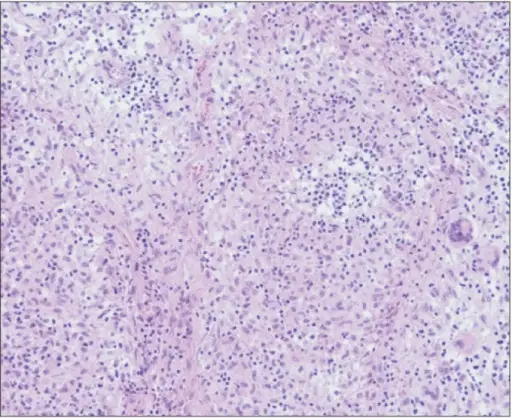Mycobacterial osteomyelitis is the infection of the bone or the bone marrow by mycobacterium tuberculosis.
What is the Pathology of Mycobacterial Osteomyelitis?
The pathology of Mycobacterial osteomyelitis is:
-Etiology: The cause of mycobacterial osteomyelitis is Mycobacterium tuberculosis
-Genes involved: None.
-Pathogenesis: The sequence of events that lead to mycobacterial osteomyelitis involves the infection of the bone marrow caused by both nonspecific and specific agents.
-Histology: The histology associated with mycobacterial osteomyelitis shows dense infiltration of leukocytes, granulation tissue, and bone sequester.
How does Mycobacterial Osteomyelitis Present?
Patients with mycobacterial osteomyelitis typically affect males more than females both in childhood and adulthood. The symptoms, features, and clinical findings associated with mycobacterial osteomyelitis include pain in a specific bone with overlying redness, fever, weakness, and inability to walk especially in children with acute bacterial osteomyelitis.
How is Mycobacterial Osteomyelitis Diagnosed?
Mycobacterial osteomyelitis is diagnosed by symptoms and laboratory tests such as CRP and ESR further supported by medical imaging and bone biopsy.
How is Mycobacterial Osteomyelitis Treated?
Mycobacterial osteomyelitis is treated by prolonged antibiotic therapy, often in conjunction with surgical intervention, particularly for spinal tuberculosis.
What is the Prognosis of Mycobacterial Osteomyelitis?
The prognosis of mycobacterial osteomyelitis is good with aggressive treatment.



